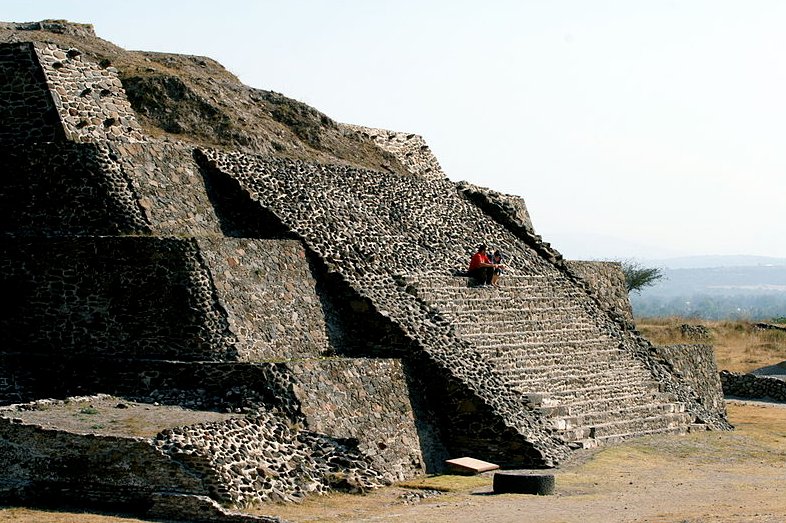This illustration of cosmos from the Chinese Turkestan is full of significant details. For our purpose at present, though, it is only necessary to count the days at the bottom. There are 13 or 14 triangular forms, shaped like pyramids, below Spring. In the center and below the King there are 4 of these in full view: 
Although my
picture is
blurred it is
obvious each
'pyramid' is
formed by 4
levels and 7
squares.
Therefore we can count
each of these
'pyramids' as a
week. 13 * 7
= 91 corresponds
to a quarter of
364 days. Adding
twice 4 (for the
only partially
visible
pyramids) makes
99.
At the top of
the Tree I think there
could be 3 more full
weeks (although
the first of
them is partly
hidden), but then
there seems to
be only the 4 steps
up of the
top of the 4th
pyramid. This is
presumably where
the King is
making his
sacrifice, where
the Cloth is
hiding what
happens:
91 + 25 = 116 (=
4 * 29). If we
should count from
spring equinox
(March 21),
then the day
number
(according to
the Gregorian
calendar) will
be 80 + 116 =
196, i.e. July
15.
The top row of 8 arches, perhaps representing 8 * 29½ = 236 nights, could illustrate the extent of the front side of a whole lunar cycle with 472 nights. This does not mean 236 nights equals 116 days (the number of squares forming 'pyramids' of weeks in the bottom row). Instead, a more reasonable explanation is to say the presence of Sun is beginning 40 days after the March equinox. 80 + 40 + 116 = 236:
Accordig to Wikipedia the Toltec culture had a pyramid with 4 levels:
| |||||||||||||||||||||||||||||||||||||||||||||||||||||||||||||||||||||||||||||||||||||||||||||||||||||||||||||||||||||||||||||||||








